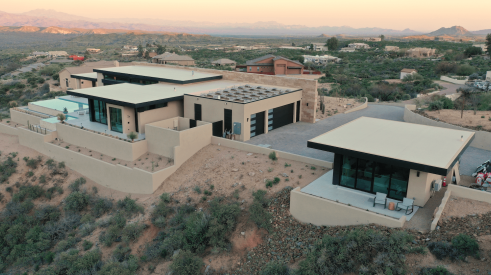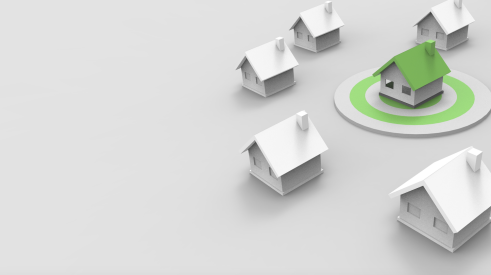Even with the sluggish housing market and a more budget-conscious consumer base, home-building professionals expect to see increased investment in water-conservation measures in home-building and remodeling projects through 2011, according to an exclusive survey of builders, land developers and residential architects by Professional Builder magazine.
More than half (53 percent) of respondents to the September 2009 survey said they expect the majority of their firms' projects to employ water-saving technologies, products and systems in the next two years. In comparison, just 35 percent of respondents said their firm used water-efficient features on the majority of projects in the last 18-24 months (Table 1).
What's driving the increased demand for water conservation in home-building projects?
The desire to reduce water and energy costs, including sewer and wastewater charges, is the biggest factor cited by survey respondents. Two-thirds of builders mentioned water- and energy-cost reductions as reasons for employing water-saving measures, while 54 percent said environmental stewardship was a key driver. Other reasons cited by respondents include: code restrictions and requirements (38 percent), avoiding current/future water shortages (34 percent), green-home certification (33 percent) and government regulations and standards (30 percent).
“Green-home building is here to stay,” said one survey respondent who is the president of a Texas home-building company. “High-performance houses help the environment as well as the end user of the home.”
Other respondents, including this Boston-based builder, said the demand for water-efficiency measures is being driven primarily by compliance requirements: “The government regulatory agency has already restricted use of water, particularly for irrigation on new projects. This has impacted us directly and forced us to reduce [the use of] turf and increase [the use of] native species that will not require irrigation after they take hold.”
Naturally, the added cost for implementing water conservation measures is a major concern among respondents. As one residential developer put it, “We are conscious of environmental factors when we develop, but we also must balance the costs of the projects with the costs of the green features we want to use. It ain't easy.”
“People aren't very interested in anything that costs them more initially,” said the president of a building company in Wyoming. “Almost all efforts at conservation or efficiency take a sales effort.” Said the CEO of a Missouri home-building company, “Rarely have we found that people are motivated to 'do the right thing' unless it affects their pocketbook.”
Another respondent said eventually builders (and buyers) won't have a choice of whether or not to go green. “While green building sounds great, ultimately local municipalities will remove the incentives and make the guidelines mandatory, thereby increasing the cost to developers and builders and ultimately the homeowners,” he said. “Ironically, they will be the same people who cry about the lack of affordable housing stock.”
The majority of survey respondents said their firms are already implementing a broad array of water-efficiency measures on their projects to achieve water-reduction goals — on average, between 10 and 11 water-efficiency strategies. Moreover, they expect their firms to employ a greater number of measures in the next two years (between 14 and 15 strategies, on average).
Low-flow showerheads, high-efficiency dishwashers and tankless water heaters are among the most commonly specified “interior” water-efficient technologies, followed by high-efficiency clothes washers, low-flow faucets and high-efficiency, single-flush gravity toilets. Dual-flush toilets and water-metering devices are among the interior technologies that are gaining popularity with home builders (Table 2).
When it comes to “exterior” water-saving measures in home-building projects, it's no surprise that stormwater management plans and retention ponds are the most commonly specific strategies, given that these measures are often mandated by local codes or permit requirements. Drip irrigation systems, low-water-use landscaping and pervious pavement were also cited by respondents as popular strategies. Automated or weather-based irrigation systems and rainwater harvesting/retention systems are among the exterior water-saving strategies that are gaining popularity (Table 3).
Despite the widespread adoption of water-saving technologies and strategies, both builders and buyers are drowning in greenwash, according to several respondents, making it difficult to choose products that are both cost-effective and functional. “Due to our current economy, selling a home that costs 20 percent [more] due to the implementation of so-called 'green' products is a difficult sale,” said one respondent. “I strongly believe that some organization needs to honestly evaluate and certify all of these 'green' products.”
| Used in last | 18-24 months | Expect to use in next 18-24 months |
| None | 17% | 9% |
| Less than 10% of projects | 17% | 11% |
| 10% to 25% of projects | 10% | 7% |
| 26% to 50% of projects | 14% | 12% |
| 51% to 75% of projects | 5% | 15% |
| More than 75% of projects | 30% | 38% |
| Base: 161 Source: BD+C/Professional Builder 2009 White Paper Survey | ||
| Used in last 18-24 months | Expect to use in next 18-24 months | |
| High-efficiency showerheads (2.0 gal/min or less) | 70% | 81% |
| High-efficiency dishwashers (10 gal or less/load) | 55% | 79% |
| Tankless water heaters | 52% | 71% |
| High-efficiency clothes washers (water factor of 7.5 or less) | 49% | 65% |
| Low-flow kitchen faucets (2.2 gal/min or less) | 47% | 68% |
| High-efficiency lavatory faucets (1.5 gal/min or less) | 46% | 67% |
| High-efficiency, single-flush gravity toilets (1.28 gal/flush or less) | 43% | 64% |
| Water metering | 42% | 51% |
| High-efficiency, pressure-assisted toilets | 32% | 39% |
| High-efficiency, dual-flush toilets | 29% | 58% |
| Dual-flush flush valves | 26% | 48% |
| High-efficiency flushometer toilets (1.28 gal/flush or less) | 26% | 42% |
| Water submetering | 19% | 33% |
| Non-water fixtures (sanitizer dispensers, UV disinfectant, etc.) | 16% | 31% |
| Water use audits | 11% | 24% |
| Base: 139, 140 Source: BD+C/Professional Builder 2009 White Paper Survey | ||
| Used in last 18-24 months | Expect to use in next 18-24 months | |
| Stormwater management plans | 73% | 77% |
| Retention ponds | 55% | 58% |
| Drip irrigation systems | 48% | 55% |
| Low-water-use landscaping, indigenous planting | 45% | 60% |
| Pervious pavement (parking, walkways, etc.) | 40% | 56% |
| Automated irrigation systems (including evapotranspiration sensors, soil moisture sensors, weather-based systems, etc.) | 40% | 55% |
| Pressure-reducing valves (for landscape irrigation) | 36% | 45% |
| High-efficiency irrigation systems | 30% | 49% |
| Rainwater harvesting/retention systems (for outdoor use, e.g., landscape irrigation) | 26% | 45% |
| Bioswales | 23% | 33% |
| Low-impact development (“LID”) | 23% | 31% |
| Turf reduction programs | 22% | 37% |
| On-site wastewater treatment systems | 22% | 26% |
| Rain gardens | 16% | 33% |
| Green (vegetated) roofs | 11% | 20% |
| Artificial turf | 9% | 16% |
| Municipally provided recycled water systems (“purple pipe”) | 8% | 19% |
| Base: 131, 132 Source: BD+C/Professional Builder 2009 White Paper Survey | ||
|
Advertisement
Related Stories
Codes + Standards
Public Comment Period Opens for National Green Building Standard Updates
The 45-day public comment period for draft 2 of the 2024 NGBS begins on April 12, 2024
Design
The Desert Comfort Idea Home: a True Desert Oasis
A challenging environment, ambitious building-performance goals, and modern aesthetics come together in a stunning, net zero custom home in Arizona's Sonoran Desert
Sustainability
Top 10 States for NGBS Green Certification in 2022
To date, these are the top 10 U.S. states for green building certification






